Congratulations, Sweet 16 coaches. You stand at the pinnacle of your profession, as the top 5 percent of coaches at Division I programs.
Here's a review of what these coaches have taught their teams to do well enough to get here, as well as a frank assessment of each coach's potential areas for improvement.
East Regional
Greg Gard, Wisconsin
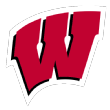 Defining quality: Defense. Gard's name is a nifty homonym for a coach who stresses putting the hurt on opposing offenses. This season, Wisconsin was blessed with excellent rim defense, but even across Gard's two-season tenure, the consistent emphasis on both forcing turnovers and chasing opponents off the 3-point line has perhaps revealed a couple of the sophomore-year coach's higher priorities. Maybe he'll switch gears next season with the departure of the senior class he inherited from Bo Ryan (Nigel Hayes, Bronson Koenig, Zak Showalter and Vitto Brown). For now, this is who Gard is.
Defining quality: Defense. Gard's name is a nifty homonym for a coach who stresses putting the hurt on opposing offenses. This season, Wisconsin was blessed with excellent rim defense, but even across Gard's two-season tenure, the consistent emphasis on both forcing turnovers and chasing opponents off the 3-point line has perhaps revealed a couple of the sophomore-year coach's higher priorities. Maybe he'll switch gears next season with the departure of the senior class he inherited from Bo Ryan (Nigel Hayes, Bronson Koenig, Zak Showalter and Vitto Brown). For now, this is who Gard is.
Weakness: Granted, we've seen only two Gard teams, but we have yet to behold the spectacle of a particularly accurate Wisconsin offense under the current coach. This season in Big Ten play, the Badgers came in under the league average in both 2- and 3-point accuracy. That isn't entirely on the coach, who isn't shooting those attempts, of course, but it's a characteristic of the team nonetheless.
Mike White, Florida
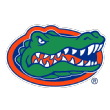 Defining quality: Well, isn't this a coincidence? When Florida meets Wisconsin in the Sweet 16, both coaches will have reached that point, in part, by putting excellent defenses on the floor with similar features. The Gators, like the Badgers, combine rim defense with a commitment to limiting opponents' 3-point attempts. UF was also helped along by the hoops gods, as SEC opponents connected on just 29.7 percent of those rare tries from beyond the arc.
Defining quality: Well, isn't this a coincidence? When Florida meets Wisconsin in the Sweet 16, both coaches will have reached that point, in part, by putting excellent defenses on the floor with similar features. The Gators, like the Badgers, combine rim defense with a commitment to limiting opponents' 3-point attempts. UF was also helped along by the hoops gods, as SEC opponents connected on just 29.7 percent of those rare tries from beyond the arc.
Weakness: As an average offensive rebounding team, the Gators are fairly reliant on each possession's first shot for their scoring. White's men are fair but not excellent on the defensive glass.
Scott Drew, Baylor
 Defining quality: Forcing misses. If "defense" were defined purely as what most people mean when they use the term in conversation -- forcing missed shots -- Baylor would rate as one of the best two or three teams in the nation. Alas, the march of accurate statistics has robbed us of our imprecision, and we know that the Bears in fact came in a close second to West Virginia for the title of best D in Big 12 play. (BU's very low opponent turnover rate made the difference.) Still, any team that can hold its conference opponents to 45 percent shooting on 2s is doing something right.
Defining quality: Forcing misses. If "defense" were defined purely as what most people mean when they use the term in conversation -- forcing missed shots -- Baylor would rate as one of the best two or three teams in the nation. Alas, the march of accurate statistics has robbed us of our imprecision, and we know that the Bears in fact came in a close second to West Virginia for the title of best D in Big 12 play. (BU's very low opponent turnover rate made the difference.) Still, any team that can hold its conference opponents to 45 percent shooting on 2s is doing something right.
Weakness: Holding on to the ball. In Big 12 play, Baylor coughed the ball up on 22 percent of its possessions. On each "effective" (turnover-less) possession, this offense scored at a rate virtually identical to what Kansas recorded. So far, however, the Bears have shown little indication that they can shut off the turnover valve.
Frank Martin, South Carolina
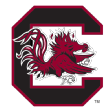 Defining quality: Defense. South Carolina forces opposing offenses to both miss shots and, especially, commit turnovers. Needless to say, that is a powerful defensive combination. Chris Silva is only a measure of cooperation from the officials away from being a game-changing defensive presence over longer periods of time. The 6-foot-9 sophomore is both a shot-blocker and a capable defensive rebounder. Sindarius Thornwell and Duane Notice both rank in the top 100 nationally for their steal rates.
Defining quality: Defense. South Carolina forces opposing offenses to both miss shots and, especially, commit turnovers. Needless to say, that is a powerful defensive combination. Chris Silva is only a measure of cooperation from the officials away from being a game-changing defensive presence over longer periods of time. The 6-foot-9 sophomore is both a shot-blocker and a capable defensive rebounder. Sindarius Thornwell and Duane Notice both rank in the top 100 nationally for their steal rates.
Weakness: Offense. If the Gamecocks really have turned over a new leaf and can continue to score 65 points per 20 minutes, the way they did in the second half of their landmark win over Duke, this section will be a moot point. That could happen, or South Carolina might score at a rate closer to what we saw from this team during the SEC season. In those 18 games, Frank Martin's offense ranked No. 11 in points scored per possession in league play. Perhaps the true South Carolina offense is somewhere between those extremes.
Midwest Regional
Bill Self, Kansas
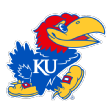 Defining quality: Shooting and making 3s. My, how times have changed. Self used to be known as a coach whose teams would record a very similar (and fairly low) number of 3-point attempts season after season. But attitudes are changing toward the long ball, and perhaps more significantly, Self has had excellent 3-point-shooting teams two seasons in a row. This still isn't the Golden State Warriors or even Vanderbilt, but Kansas did attempt an above-average number of 3s in Big 12 play this season. That was a good call: Frank Mason III is a 47 percent shooter from beyond the arc, and Devonte' Graham, Svi Mykhailiuk and Josh Jackson are all right at 39 percent.
Defining quality: Shooting and making 3s. My, how times have changed. Self used to be known as a coach whose teams would record a very similar (and fairly low) number of 3-point attempts season after season. But attitudes are changing toward the long ball, and perhaps more significantly, Self has had excellent 3-point-shooting teams two seasons in a row. This still isn't the Golden State Warriors or even Vanderbilt, but Kansas did attempt an above-average number of 3s in Big 12 play this season. That was a good call: Frank Mason III is a 47 percent shooter from beyond the arc, and Devonte' Graham, Svi Mykhailiuk and Josh Jackson are all right at 39 percent.
Weakness: Defensive rebounding. It hasn't come into play yet for a team that, after all, has lost just four times all season, but the available evidence suggests that an opponent can achieve good results on the offensive glass. Put even more succinctly, Landen Lucas is just one guy.
Matt Painter, Purdue
 Defining quality: Perimeter scoring. People are still having a tough time wrapping their heads around this, but yes, the team with Caleb Swanigan and a reputation for tough, bruising defense is in fact elite when it comes to scoring three points at a time. Dakota Mathias is shooting 46 percent from beyond the arc this season, and in Big Ten play, fully 38 percent of Purdue's shot attempts came from 3-point land. Biggie enhances this perimeter orientation's effectiveness by tying down defenders in the paint and, of course, by stepping out and knocking down an occasional 3 himself.
Defining quality: Perimeter scoring. People are still having a tough time wrapping their heads around this, but yes, the team with Caleb Swanigan and a reputation for tough, bruising defense is in fact elite when it comes to scoring three points at a time. Dakota Mathias is shooting 46 percent from beyond the arc this season, and in Big Ten play, fully 38 percent of Purdue's shot attempts came from 3-point land. Biggie enhances this perimeter orientation's effectiveness by tying down defenders in the paint and, of course, by stepping out and knocking down an occasional 3 himself.
Weakness: Turnover margin. Seen in isolation, there's nothing particularly egregious about Purdue's average turnover rate in Big Ten play or, for that matter, the low but not unheard of number of giveaways that conference opponents recorded. Taken together, however, the two figures mean that the Boilermakers will likely continue to operate at a fairly significant disadvantage relative to opponents in terms of possessions ending with a shot.
Dana Altman, Oregon
 Defining quality: Getting looks at the rim. Per hoop-math.com, 42 percent of Oregon's shot attempts this season have been recorded at the rim. Gonzaga and Xavier are the only remaining teams that are at or above that figure for the season. Dylan Ennis and Jordan Bell in particular are fond of launching their shots from just a foot or two from the goal. The healthy share of attempts in close helped push the Ducks' overall figure for 2-point accuracy all the way up to 55 percent in Pac-12 play. Along with UCLA, Oregon posted one of the highest effective field goal percentages we've seen in major-conference play in the past 10 seasons.
Defining quality: Getting looks at the rim. Per hoop-math.com, 42 percent of Oregon's shot attempts this season have been recorded at the rim. Gonzaga and Xavier are the only remaining teams that are at or above that figure for the season. Dylan Ennis and Jordan Bell in particular are fond of launching their shots from just a foot or two from the goal. The healthy share of attempts in close helped push the Ducks' overall figure for 2-point accuracy all the way up to 55 percent in Pac-12 play. Along with UCLA, Oregon posted one of the highest effective field goal percentages we've seen in major-conference play in the past 10 seasons.
Weakness: Allowing second chances. The Pac-12 rebounded 31 percent of its missed shots against Oregon this season. That's actually a pretty small number, but it was above the conference average and perhaps hints at a cautionary conclusion. With the possible exception of Cal, the league didn't really have any teams that tried for offensive boards this season. The Ducks might not perform particularly well in that department against a tournament opponent that tries for second chances.
John Beilein, Michigan
 Defining quality: Wizardry on offense. Beilein has developed a healthy reputation for putting perimeter-oriented offenses on the floor, and certainly his current offense shoots a lot of 3s. Still, the most striking aspect of the Wolverines' performance so far this season has been the frequency with which they make their 2s. With the 6-foot-11 Moe Wagner and the 6-foot-10 D.J. Wilson each able to drain 3s but also shooting a combined 65 percent from inside the arc this season, Beilein does not lack for options on offense, and opposing defenses do not lack for headaches.
Defining quality: Wizardry on offense. Beilein has developed a healthy reputation for putting perimeter-oriented offenses on the floor, and certainly his current offense shoots a lot of 3s. Still, the most striking aspect of the Wolverines' performance so far this season has been the frequency with which they make their 2s. With the 6-foot-11 Moe Wagner and the 6-foot-10 D.J. Wilson each able to drain 3s but also shooting a combined 65 percent from inside the arc this season, Beilein does not lack for options on offense, and opposing defenses do not lack for headaches.
Weakness: Interior defense. For a second consecutive season, Michigan is having difficulty defending the rim. This issue isn't going anywhere, though it is being submerged a bit like a rock under a wave. In the NCAA tournament, Oklahoma State and Louisville combined to convert 57 percent of their 2s against this defense, but the Wolverines have been able to score their way out of that weakness. (See above.)
South Regional
Roy Williams, North Carolina
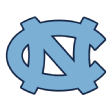 Defining quality: A wall of shot attempts. Even Bob Huggins himself can't match what Roy Williams' teams are able to do in the area of shot volume. It sure didn't look like it when North Carolina played Arkansas, but this offense does not ordinarily commit many turnovers. More possessions ending in a shot attempt means more chances either to record a make or for Kennedy Meeks, Isaiah Hicks or Tony Bradley to get another offensive rebound. This season, no major-conference team equaled what UNC achieved in terms of getting more bites at the scoring apple.
Defining quality: A wall of shot attempts. Even Bob Huggins himself can't match what Roy Williams' teams are able to do in the area of shot volume. It sure didn't look like it when North Carolina played Arkansas, but this offense does not ordinarily commit many turnovers. More possessions ending in a shot attempt means more chances either to record a make or for Kennedy Meeks, Isaiah Hicks or Tony Bradley to get another offensive rebound. This season, no major-conference team equaled what UNC achieved in terms of getting more bites at the scoring apple.
Weakness: Perimeter defense. Opposing offenses shoot a very high number of 3s against this Carolina defense, and if those attempts ever fall, things could get interesting, even for a high-scoring No. 1 seed. In their round-of-32 game against the Heels, the Razorbacks kept the outcome in doubt in part by shooting 45 percent on their treys after halftime.
Chris Holtmann, Butler
 Defining quality: Low-low-turnover basketball. The advantage that Butler had over the rest of the Big East simply by virtue of the Bulldogs' microscopic turnover rate played a significant role in this team's earning a No. 4 seed in the NCAA tournament. Kelan Martin, Avery Woodson & Co. are great players, and an underrated element in their greatness is the fact that they never give the ball away. Woodson in particular is on another planet in this regard. The Bulldogs senior has logged 735 minutes this season while committing just 10 turnovers. I don't want to name names, but there have been 14 instances this season when a player gave the ball away 10 or more times in a single game. Woodson's even more extreme than his team.
Defining quality: Low-low-turnover basketball. The advantage that Butler had over the rest of the Big East simply by virtue of the Bulldogs' microscopic turnover rate played a significant role in this team's earning a No. 4 seed in the NCAA tournament. Kelan Martin, Avery Woodson & Co. are great players, and an underrated element in their greatness is the fact that they never give the ball away. Woodson in particular is on another planet in this regard. The Bulldogs senior has logged 735 minutes this season while committing just 10 turnovers. I don't want to name names, but there have been 14 instances this season when a player gave the ball away 10 or more times in a single game. Woodson's even more extreme than his team.
Weakness: Defense. Weakness is a relative term, but in contrast to BU's exemplary offense, this defense was (almost exactly) average in Big East terms. Moreover, it's a unit that is average across the board, with no particular strength other than defensive rebounding.
Steve Alford, UCLA
 Defining quality: Shooting of all kinds. UCLA is accurate on its 2s, its 3s and its free throws. Lonzo Ball (this cannot be repeated enough) is making 73 percent of his shot attempts inside the arc, and on a normal team, we'd be pointing and gawking at the percentages posted in the same category by TJ Leaf (65) and Thomas Welsh (58). Bryce Alford is connecting 43 percent of the time on his 3s, and Ball and Aaron Holiday come close to that success rate at their somewhat lower volumes. Steve Alford has one of the most accurate major-conference offenses of the past decade.
Defining quality: Shooting of all kinds. UCLA is accurate on its 2s, its 3s and its free throws. Lonzo Ball (this cannot be repeated enough) is making 73 percent of his shot attempts inside the arc, and on a normal team, we'd be pointing and gawking at the percentages posted in the same category by TJ Leaf (65) and Thomas Welsh (58). Bryce Alford is connecting 43 percent of the time on his 3s, and Ball and Aaron Holiday come close to that success rate at their somewhat lower volumes. Steve Alford has one of the most accurate major-conference offenses of the past decade.
Weakness: The skepticism of others. Devotees of the "eye test" and believers in analytics have fought many a pitched battle in recent years, but when it comes to the UCLA defense, these two traditionally warring camps are united in serene accord. Fans from both categories suspect that the Bruins aren't really capable of limiting opposing offenses well enough to win a national title. Are they correct? They have the numbers on their side: 15 of the coaches listed here are going to come up short. Just remember two things: (A) UCLA improved on D late in the season and (B) the hoops gods don't care how you outscore opponents, even if the numbers for points scored for and against are both higher than people are accustomed to seeing.
John Calipari, Kentucky
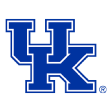 Defining quality: Scoring inside the arc. All those dunks by Bam Adebayo are both entertaining and cumulatively effective. Adebayo is the outlier on a team on which "average" for 2-point accuracy is in fact excellent. Malik Monk, De'Aaron Fox, Isaiah Briscoe -- you name it, the main sources for offense at Kentucky all make half their 2s or better. Then there's Derek Willis and his (admittedly low volume) 66 percent shooting inside the arc. The Wildcats' offense is interior-oriented, and while UK is perfectly capable of knocking down 3s, you can see the rationale behind Calipari's choice of emphasis.
Defining quality: Scoring inside the arc. All those dunks by Bam Adebayo are both entertaining and cumulatively effective. Adebayo is the outlier on a team on which "average" for 2-point accuracy is in fact excellent. Malik Monk, De'Aaron Fox, Isaiah Briscoe -- you name it, the main sources for offense at Kentucky all make half their 2s or better. Then there's Derek Willis and his (admittedly low volume) 66 percent shooting inside the arc. The Wildcats' offense is interior-oriented, and while UK is perfectly capable of knocking down 3s, you can see the rationale behind Calipari's choice of emphasis.
Weakness: Forcing misses. This is highly unusual to say about a Calipari defense, but SEC opponents shot slightly better than the league average on their 2s against Kentucky. Maybe the Wildcats are improving on that side of the ball in the postseason: Wichita State connected just 42 percent of the time inside the arc. If anything within shouting distance of UK's 2012-level rim defense were to be combined with this team's ability to make shots, that would indeed be a potent mix.
West Regional
Mark Few, Gonzaga
 Defining quality: Dominance inside the arc at both ends. That Zach Collins goaltend on Northwestern's Dererk Pardon in the round of 32 was at once controversial, pivotal and paradigmatic. The block was against the rules, but 57 other times this season, the freshman has swatted shots the proper way -- and, incredibly, he has done so while averaging just 17 minutes a game. The Bulldogs do not allow 2-point makes, then Przemek Karnowski, Nigel Williams-Goss & Co. turn around and convert a very high number of their tries inside the arc.
Defining quality: Dominance inside the arc at both ends. That Zach Collins goaltend on Northwestern's Dererk Pardon in the round of 32 was at once controversial, pivotal and paradigmatic. The block was against the rules, but 57 other times this season, the freshman has swatted shots the proper way -- and, incredibly, he has done so while averaging just 17 minutes a game. The Bulldogs do not allow 2-point makes, then Przemek Karnowski, Nigel Williams-Goss & Co. turn around and convert a very high number of their tries inside the arc.
Weakness: History and perception. The Zags labor under a degree of skepticism largely unwarranted by events. In 2013, Gonzaga lost as a No. 1 seed in the round of 32 when Wichita State made a season-high 14 shots from beyond the arc. Similarly, observers are fond of noting that the Bulldogs have never been to the Final Four but gloss over the fact that Few was in the Elite Eight just two years ago. He was paired in a regional final with the team that ended up winning it all. Losing to the team everyone lost to is not a particularly searing indictment of tournament performance.
Bob Huggins, West Virginia
 Defining quality: Taking more shots. Forcing turnovers gets all the attention in Morgantown, but the press can be thought of as just one (very important) leg in a three-legged stool. In addition to taking the ball away from opponents, West Virginia stays away from turnovers on offense and crashes the glass on its misses. Do all of the above, and you'll get more chances to score than the other team. Huggins' teams have pressed aggressively in each of the past three seasons, and this season, the Mountaineers were good but not outstanding in terms of taking care of the ball. Conversely, Huggins' teams almost always record a very good offensive rebound percentage, including in 2016-17.
Defining quality: Taking more shots. Forcing turnovers gets all the attention in Morgantown, but the press can be thought of as just one (very important) leg in a three-legged stool. In addition to taking the ball away from opponents, West Virginia stays away from turnovers on offense and crashes the glass on its misses. Do all of the above, and you'll get more chances to score than the other team. Huggins' teams have pressed aggressively in each of the past three seasons, and this season, the Mountaineers were good but not outstanding in terms of taking care of the ball. Conversely, Huggins' teams almost always record a very good offensive rebound percentage, including in 2016-17.
Weakness: Shooting, particularly on the perimeter. The Mountaineers didn't try many 3s this season, and when they did, those shots fell 35 percent of the time. The accuracy's average and the resulting volume is low.
Chris Mack, Xavier
 Defining quality: Rebounding. In three of the past four seasons, as Xavier's personnel has turned over entirely, the Musketeers have finished either first or second in offensive rebound percentage in Big East play. Second chances helped offset the loss of Edmond Sumner to a torn ACL in January. Sean O'Mara, Tyrique Jones and RaShid Gaston all contributed to Xavier's pulling down 36 percent of its missed shots in conference play. The Musketeers are equally strong on the defensive glass.
Defining quality: Rebounding. In three of the past four seasons, as Xavier's personnel has turned over entirely, the Musketeers have finished either first or second in offensive rebound percentage in Big East play. Second chances helped offset the loss of Edmond Sumner to a torn ACL in January. Sean O'Mara, Tyrique Jones and RaShid Gaston all contributed to Xavier's pulling down 36 percent of its missed shots in conference play. The Musketeers are equally strong on the defensive glass.
Weakness: Offense outside the arc. Xavier shot just 33 percent on its 3s in Big East play. Opponents can pack the paint on defense with little fear of adverse consequences.
Sean Miller, Arizona
 Defining quality: Defensive rebounding. Good work on the defensive glass suffers from an image problem. It isn't glamorous, but if Northwestern had been able to limit Gonzaga to one shot more often, a certain misstep by officials could have been less harmful to the Wildcats. Which brings us to another set of Wildcats. Miller has presided over some excellent defensive rebounding teams, and this current group is no exception. Dusan Ristic and Lauri Markkanen are both strong on the defensive glass, and together, they cap the volume of opponents' shots.
Defining quality: Defensive rebounding. Good work on the defensive glass suffers from an image problem. It isn't glamorous, but if Northwestern had been able to limit Gonzaga to one shot more often, a certain misstep by officials could have been less harmful to the Wildcats. Which brings us to another set of Wildcats. Miller has presided over some excellent defensive rebounding teams, and this current group is no exception. Dusan Ristic and Lauri Markkanen are both strong on the defensive glass, and together, they cap the volume of opponents' shots.
Weakness: Interior scoring. Wait, what? Lengthy and athletic Arizona, with all its blue-chip talent, is seeing its coach listed as weak for interior scoring? Well, this season, yes. The Wildcats made 50.1 percent of their 2s in Pac-12 play. The league average was 50.5.
